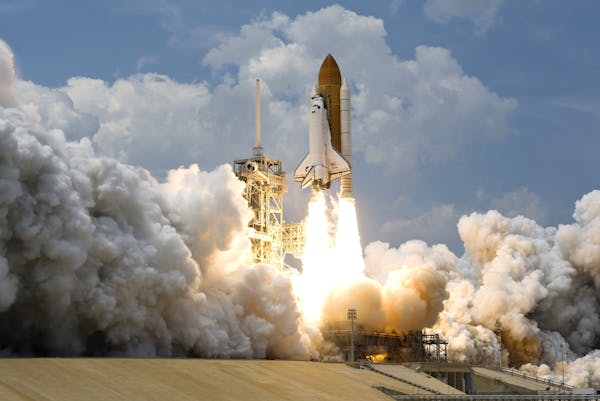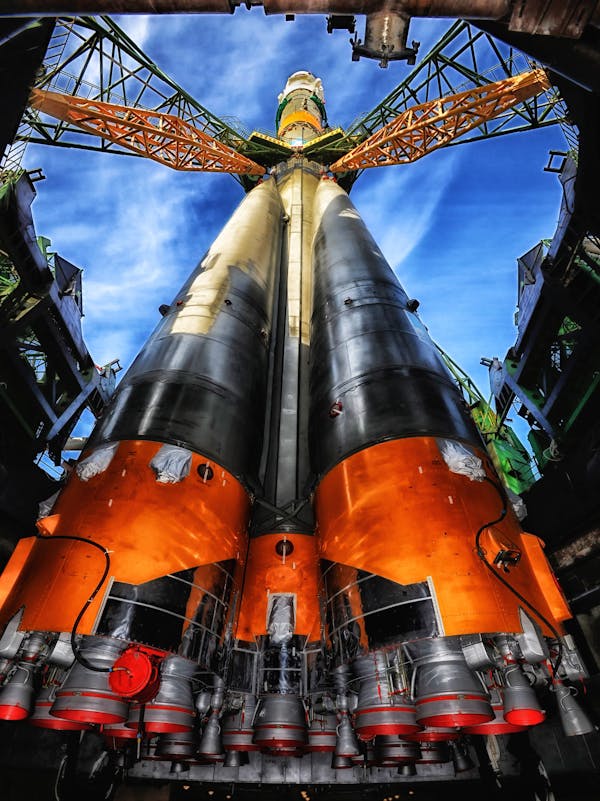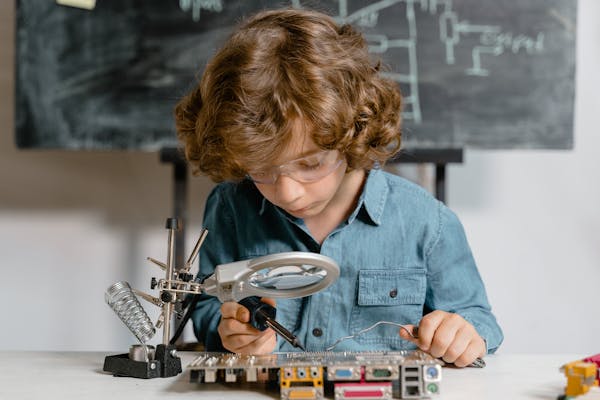A New Chapter in India’s Space Odyssey
India’s space program reached a landmark in 2025 with an ambitious lineup of missions that demonstrate its growing capabilities and vision. Under ISRO’s leadership, projects like the Gaganyaan human spaceflight program and a series of planned lunar missions are pushing technical boundaries. These achievements are not just national milestones – they are powerful catalysts sparking students’ interest in STEM fields and innovation. In fact, ISRO’s own chairman has declared 2025 the “Gaganyaan Year,” emphasizing how critical this period is for India’s space ambitions ndtv.com. Globally, major agencies are similarly gearing up for new explorations: NASA’s Artemis program aims to land astronauts on the Moon by 2026hyperxpedia.blogspot.com, and ESA’s Euclid telescope (launched in 2023) is mapping dark matter and energy in the cosmos hyperxpedia.blogspot.com. This vibrant international landscape reinforces the message to Indian youth that space science is an active, evolving frontier – not just history.
India’s 2025 missions have practical goals as well as inspirational ones. ISRO now operates dozens of satellites that support education, agriculture, disaster management, and more. In fact, 57 Indian satellites are currently delivering real-time data on weather, resources, and connectivity timesofindia.indiatimes.com. By linking space technology to everyday life – for example through satellite-enabled internet in remote schools – these missions show students that the universe is relevant to their future. I recall in my own school science fair how a model rocket inspired a lifetime of curiosity; today’s students have even grander real-world examples to emulate.
Gaganyaan: India’s Leap Toward Manned Spaceflight
No 2025 discussion is complete without India’s flagship Gaganyaan program. This is India’s first attempt to send humans to space, and 2025 was designated for its key test flights. ISRO Chairman V. Narayanan announced that by the end of 2025 India would launch three uncrewed Gaganyaan missions, starting with a spacecraft carrying its humanoid robot “Vyommitra” ndtv.com. During a May 2025 media briefing, he reported that over 7,200 tests had already been completed, with about 3,000 more pending – a testament to the program’s rigor ndtv.comtimesofindia.indiatimes.com. The uncrewed test flights are scheduled monthly in late 2025, paving the way for a crewed mission expected in early 2027 ndtv.comtimesofindia.indiatimes.com.
For students and educators, Gaganyaan is more than rocket science. It symbolizes India joining an elite club of nations with human spaceflight capability. Classrooms across India now eagerly follow Gaganyaan updates. Many schools have put up pictures of the Gaganyaan spacecraft and robot, and science teachers use the mission to explain physics and biology concepts – from orbital mechanics to life support systems. My impression is that the sense of national pride is contagious: as ISRO’s leader said, Gaganyaan is “not only a mission but an icon” of India’s future space endeavors timesofindia.indiatimes.com. When young students see our astronauts orbiting Earth, it demystifies science as an abstract concept and shows them real people – fellow Indians – achieving what was once science fiction.
Internally, ISRO is leveraging this excitement by expanding student outreach. In April 2025, the YUVIKA program (Young Scientist Program) welcomed high school students to ISRO centers for hands-on training in space science isro.gov.in. These students built model rockets, coded satellites (CANSAT kits), and even met with space scientists. A student I spoke with after YUVIKA raved about how coding a rover or seeing the satellite assembly plant made him consider engineering as a career. ISRO’s motto of “catch them young” is evident: YUVIKA “imparts basic knowledge on Space Technology, Space Science and Space Applications” to ignite STEM interest isro.gov.in.
Similarly, the new NE-SPARKS outreach program brings 800 talented students from India’s Northeastern states on guided tours of ISRO’s facilities isro.gov.in. The first batch toured Bengaluru in April 2025, meeting with Dr. Narayanan and visiting the Satellite Control Centre and launch facilities isro.gov.in. These immersive experiences let students witness real space technology up close. After watching the control room or seeing an actual PSLV rocket booster, many students return to their colleges eager to set up astronomy clubs or enter national science contests. Such ISRO student programs are directly planting the seeds of innovation: as one NE-SPARKS participant told press, interacting with engineers “helped him envision a future in science and technology” isro.gov.inisro.gov.in.
It’s not surprising that classrooms are buzzing. The Gaganyaan timeline itself has become a practical lesson plan in physics and history. Science fairs now feature projects on “human missions” and space robotics, and librarians compile “Space Mission 2025” reading lists. ISRO’s emphasis on inclusive, practical experiments (like student space missions and satellite tech expos) means that “space tech in Indian education” is no longer a future prospect but a current reality. In fact, India’s curriculum boards have begun incorporating recent space missions into textbooks and competitions. For example, robotic contests for schoolchildren now often revolve around space themes, and coding workshops simulate satellite data analysis. These initiatives ensure that students see themselves as part of India’s space story, not just observers.
Lunar Exploration and Beyond
While Gaganyaan headlines the news, ISRO’s robotic lunar program is also leaping ahead. India’s success with Chandrayaan-2 (2023) set the stage for even more ambitious Moon missions. In 2025 ISRO outlined a roadmap including Chandrayaan-4 and Chandrayaan-5 timesofindia.indiatimes.com. Chandrayaan-5 is a joint mission with Japan: it will include a 6,400 kg lander and 350 kg rover (far larger than the 25 kg rover of Chandrayaan-3) to conduct in-depth science on the Moon’s surface timesofindia.indiatimes.com. Even more exciting to students is Chandrayaan-4, planned within the next 2.5 years, which aims to return lunar soil samples to Earth – a first for India timesofindia.indiatimes.com. That means an Indian flag may soon come back with pieces of the Moon.
These lunar missions underscore India’s growing role in global space exploration. They have a strong appeal for STEM curricula: geology, chemistry, robotics, and even interplanetary logistics become classroom topics. For instance, after news of the sample-return mission, many university lab courses have added modules on “simulating Moon rocks” and sample analysis. Students building rovers in college labs now look to Chandrayaan rovers as prototypes. And with ISRO planning a national space station (a 50-tonne lab in orbit) as well, aspirational horizons keep expanding timesofindia.indiatimes.com. The vision is clear: young engineers and scientists in India now know there are domestic projects for them to contribute to.
India’s thriving satellite network also plays an indirect role in education. According to ISRO, its 57 working satellites are actively supporting Indian society – from mapping fields for farmers to connecting remote schools to the internet timesofindia.indiatimes.com. In fact, many student tech projects now leverage Indian satellites: one high school team I met recently built a miniature Earth-monitoring satellite model based on data from ISRO’s data cubes. In northern India, students programming weather models use datasets from the INSAT series. These real applications make space tech less abstract. By solving local problems with space data, students gain a sense of innovation that ties back to ISRO’s missions.
Internally linking hyperxpedia posts underscores this context. For example, an article on the Euclid Space Telescope shows how international missions are uncovering cosmic mysteries hyperxpedia.blogspot.com, which broadens Indian students’ perspective beyond Earth. Similarly, HyperXpedia’s coverage of NASA’s Artemis program highlights renewed Moon missions hyperxpedia.blogspot.com – India’s Chandrayaan plans are part of this larger narrative. When students learn about Artemis and Chandrayaan side by side, they understand that “space is the place” where India now competes globally.
Inspiring India’s Innovators of Tomorrow
All these developments are bearing fruit in the classroom. Surveys and anecdotes suggest that a higher percentage of students are now including astronomy or aerospace clubs on their profiles. In college engineering courses, there is a noticeable rise in interest in space science electives. Many colleges and even high schools have started celebrating “Space Week” or project days around ISRO missions. This groundswell of enthusiasm is no accident: national pride in India’s accomplishments is filtering into educational goals.
Personal commentary: As someone who grew up reading about the Apollo Moon landing, I remember the awe those stories held. Today’s Indian students have their own story to read and contribute to. It’s a privilege that our generation can watch Indian rockets launch from Sriharikota while chatting online with friends about designing satellites. Every time a Gaganyaan countdown reaches zero, it reinforces in young minds that science and math can be exciting, real, and rewarding. When a student in a Delhi lab codes a satellite tracking app, she’s doing “space tech” work on her smartphone – and she knows ISRO scientists are doing the same on real satellites.
This inspiration is strategic, too. India has set itself the goal of becoming a “knowledge superpower,” and space is a core part of that vision. By tethering cutting-edge missions to educational outreach, ISRO is training a new generation of engineers, data scientists, and researchers. The NE-SPARKS students and YUVIKA alumni of 2025 will become tomorrow’s innovators – they might design the next Mars rover or write the AI software for an orbital research station. Already, some students are interning at ISRO or space startups, citing 2025’s space goals as their motivation.
In sum, 2025 has been a banner year for India’s space endeavors and a turning point for STEM education. The synergy between ISRO’s missions and its student programs is clear: each rocket launch and lunar probe is mirrored by a student workshop or science fair back home. The primary and secondary school curriculum increasingly references real ISRO data, and universities tailor research to national missions. From Delhi to Dibrugarh, children are looking up at the sky with new ambition. They see satellites and rockets not as distant machines, but as part of India’s unfolding story – and they want to be part of it themselves.
Conclusion
India’s space missions in 2025 – from the countdown to Gaganyaan to plans for moon sample returns – are doing more than advancing science: they’re igniting minds. By aligning cutting-edge projects with educational outreach, ISRO ensures that every mission fuels curiosity. Students today witness India’s next-generation space journeys firsthand, which inspires them to pursue careers in science and technology. In this way, 2025 is not just about rockets and robots; it’s about nurturing a new generation of Indian innovators who will continue to reach for the stars.
Written by: HyperXpedia™




